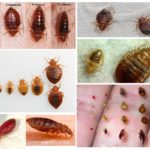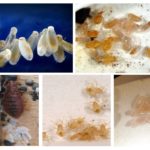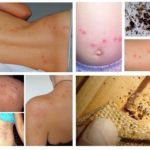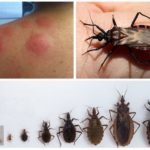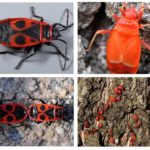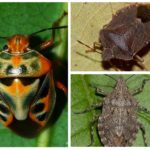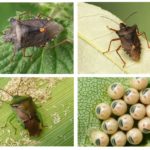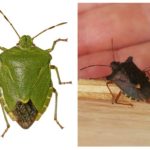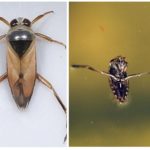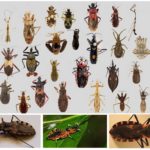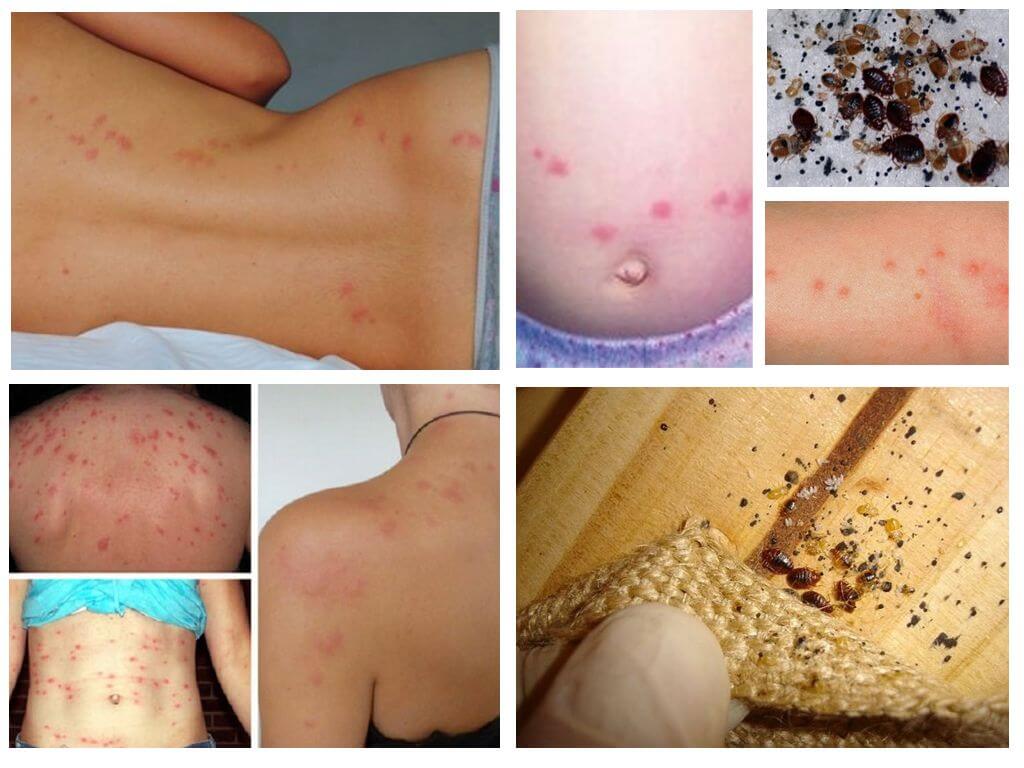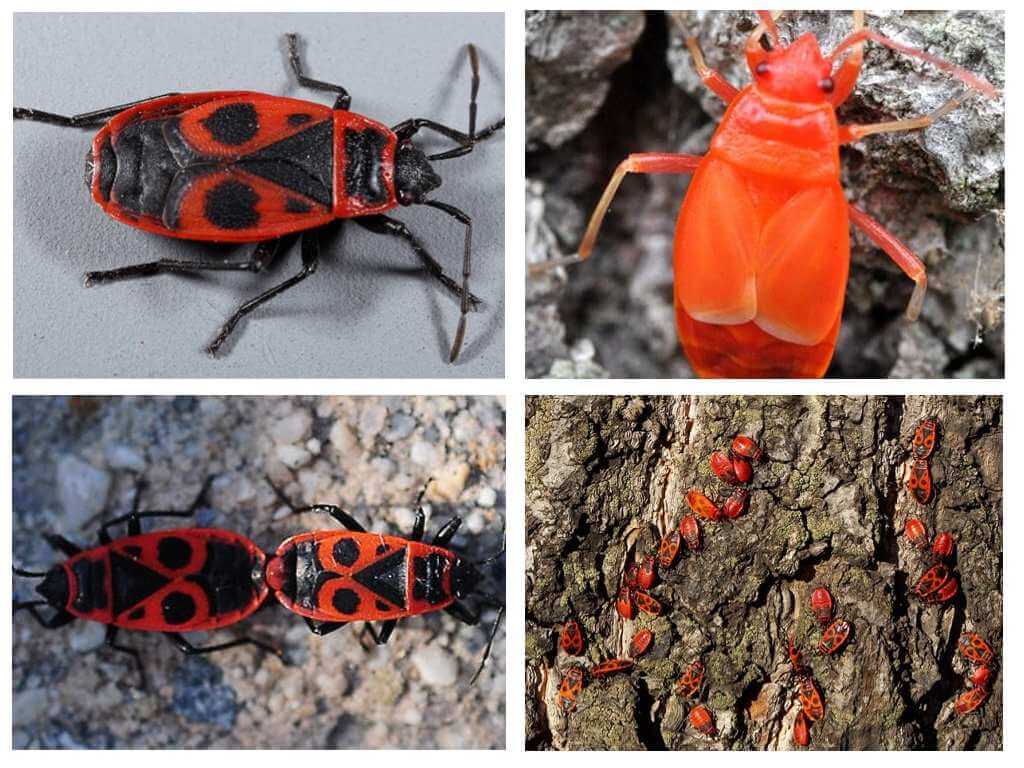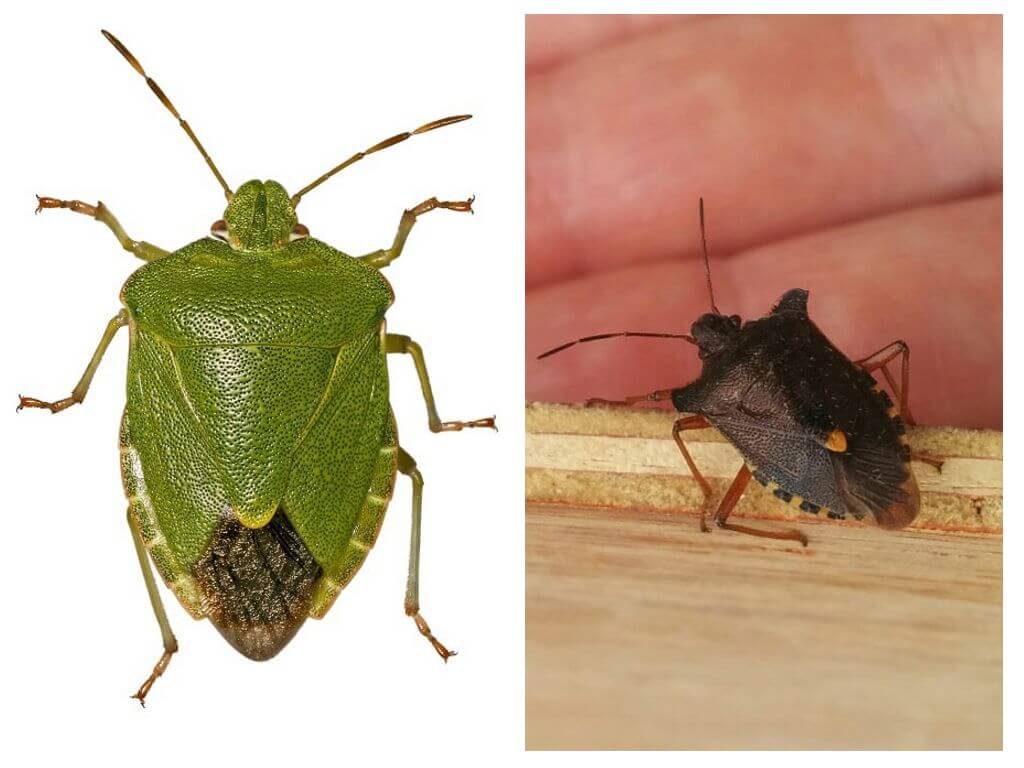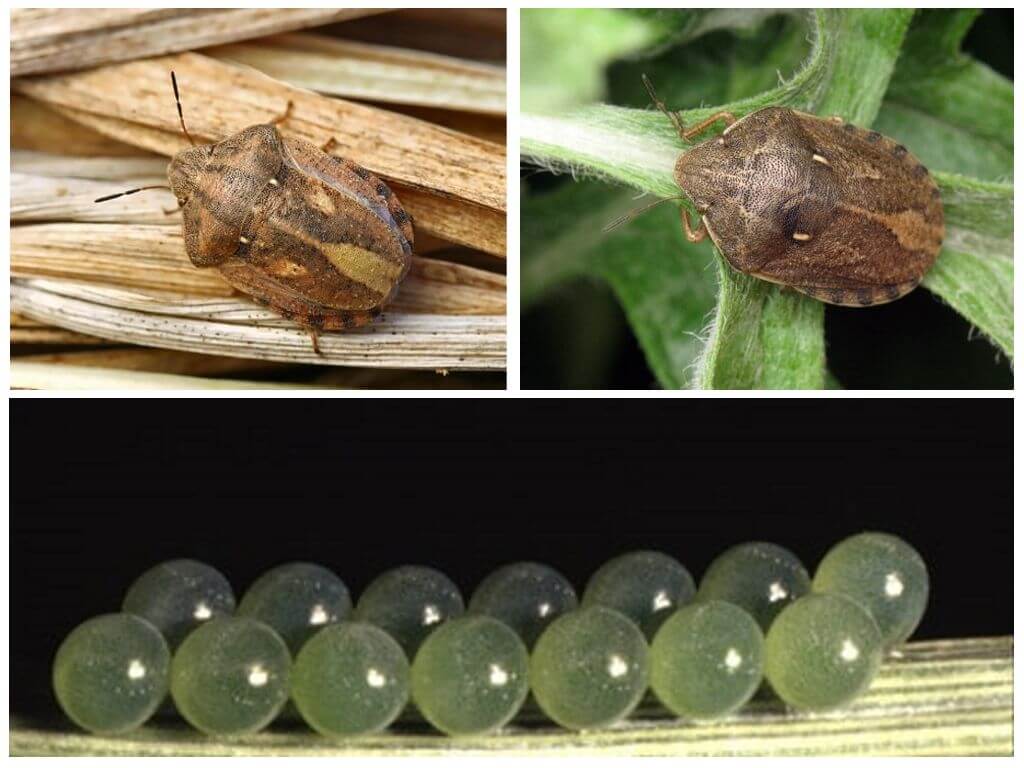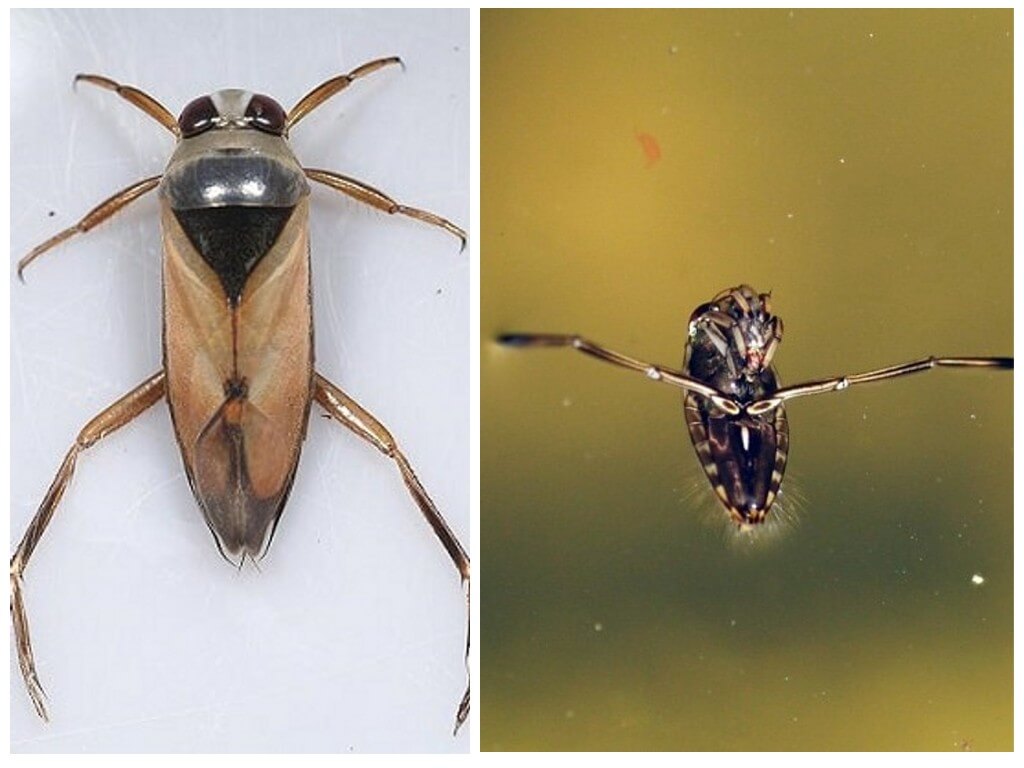What the bugs look like in the photo
Content
- Domestic bugs
- Bed Eggs Eggs
- Signs of bedbugs
- Triatom bug
- Soldiers
- Shchitniki
- Forest bug
- Woody bug
- Bug
- Water bug
- Bedbugs predators
Photos of domestic bugs
Most annoying man can bed bugs. Due to the nature of their behavior, it is quite difficult to identify their settlements in the early stages. Home and bed - the name of the same insect. Depending on the chosen place for settlement, other names are applied to the parasites:
- bed;
- furniture;
- clothesline;
- duffel.
Do not confuse bed parasites with dust miteswhich also inhabit the apartment. Dust mite besides places of residence has nothing to do with the blood-sucking parasite. As the bed bugs look like in the photo, you can see below, in reality, their appearance is more disgusting and causes a shock state in especially sensitive natures.When parasites appear in an apartment, people with an unstable psyche develop "bedbetting". It seems to a person that apartment bugs are ready to appear at any moment, he is haunted by the constant fear that the parasite may fall out of his clothes and he has to constantly inspect himself and the surrounding workplace.
How to look at home bugs in the photo
Adult representatives differ in the small sizes. The length of the body of a well-fed individual barely reaches 0.9 mm-1 cm. Females are larger than males. The body of the hungry parasite is very flattened and almost invulnerable to mechanical influences. After the feast, it increases and changes color from light brown to saturated brown. To consider in detail change in size, see photos of bed bugs before and after the meal.
At one meal, house bugs drink a quantity of blood that is twice their own weight.
Room bugs do not fly fly, but move relatively quickly, overcoming one meter per minute. A careful study of photos of domestic bugs, you can see that, compared with the body, the head is very small and different triangular shape.Jaws have grown together in the proboscis, equipped with two channels. One serves to pierce the skin, the second - to absorb food. The duration of the life cycle of the home bug 12-14 months.
How parasites breed
Mating bedbugs occurs through traumatic insemination. The male pierces the female's abdomen and inserts sperm into the resulting hole, which is subsequently collected in a special section and formed into eggs. The hole on the abdomen eventually becomes overgrown and a speck forms in its place. In the photo, bed bugs have several such neoplasms, according to their number, the number of matings can be counted.
In times of hunger, the female uses unformed eggs as a food source.
In order for the female to lay eggs throughout her life, mating is enough for her. Males are very loving and can mate up to 200 times a day. They are unintelligible in choosing a partner and show interest in other species of insects, nymphs, males from their own nests. When another male is inseminated, it acts as a “sperm bank”. As a result, the female gets a kind of cocktail from the genetic material of a large number of males.
Klopinye eggs in the photo
A fertilized female lays eggs in batches, in one egg-laying there are from 6 to 12 eggs. Below the photo shows how what bedbug eggs look like. They are distinguished by their tiny size, white color and oblong shape. Eggs are reliably protected by a durable transparent shell that is able to protect them even from the effects of most insecticides. There is a miniature lid on the eggs, which can be seen in the photo of domestic bugs only upon close examination.
Photos of the larvae in the apartment
A few days later, eggs appear. maggotswhich are called nymphs. For development, they need regular food, so unlike adult individuals, nymphs go hunting more often. The growth time of the larvae is 30-40 days, during which time it molts 5 times - it updates the shell, which is already small for it. Chitinous shells can be found in bed, along the route of movement of the nymph, directly in the nest and other places of the apartment.
Signs of bedbugs in the apartment
Meet the wandering "first mover" in the apartment rarely who can. Most often bed bugs give out their presence when the population has grown significantly.In the daytime, domestic parasites lurk in hidden dark places: under the mattress, in the bed, under the upholstery of the upholstered furniture, in the crevices, under the baseboards, in the furniture, in the clothes. Where bedbugs in the house prefer to pile up - Photos of the majority of infected apartments prove that the parasites are trying to settle closer to their victim directly on the bed. In the predawn hours, they become more active and begin to bite their victims. Bedbug bites painless due to the fact that saliva contains an anesthetic substance.
It is possible to distinguish between the fact that it was the domestic bugs that were bitten:
- tracks of 3-5 bites:
- swelling with a puncture in the center and knob;
- severe burning and itching.
Bloody specks on the bedding, small black balls - feces of domestic bugs, which can be found on the walls, under the wallpaper, on the furniture, the specific cognac smell of rotten raspberries - all these signs indicate that household bugs started up in the apartment. See photos of bugs in an apartment heavily infected with bloodsuckers.
Parasites are not carriers of diseases. Their bites can trigger allergic reactions, the presence of bloodsuckers in the house interferes with normal sleep and comfortable living. How to get rid of household bugs in the apartment, everyone decides for himself. To do this, you can try to make independent attempts or contact specialized insect extermination services.
Photos of the most dangerous bug
The most dangerous types of bugs are triatom. Despite their romantic name “kissing,” they represent a serious danger to human life.
There are about 130 species in the detachment and almost all are carriers of the deadly virus - Chagas disease, which can be cured only at the initial stage. For this reason, they are most commonly called killer bugs. Chagas disease kills 50,000 people annually.
The size of kissing bugs reaches 3 cm. Color varies from dark brown to black. The shell is decorated with characteristic stripes of yellow, orange or red. See what they look like. killer bugs, most of the inhabitants of the planet can only be in photographs, because dangerous insects live in South America.According to the observations of entomologists, 95% of individuals live in a wild environment and only 5% prefer to live in rural houses and outbuildings.
Shchitniki
Shchitniki - numerous family of bugs. You can meet them almost anywhere: in the courtyard of the house, in the backyard, in the forest, in the field, in the public garden, in flower beds. Shchitnikami bugs called because of the shape of the body. If you look at it from above, then it is an irregular pentagon.For all members of the genus of shielders, specific secretions from odorous glands are characteristic, which play the role of pheromones and a deterrent for enemies. Because of this, they got the offensive nickname: stink bugs.
For a species of bug bugs is not characterized by an attack on a person. Most of them feed on plant sap, in rare cases the remains of dead insects.
In Europe, there are about 70 species of shields.
"Harmless" bug soldier
Appearance bedbugs soldiers makes them stand out from the whole family of klopin, thanks to the red and black ornament on the shell. The size of the body does not exceed 9-10 mm. The insect is thermophilic and lives throughout Eurasia with a temperate climate. Soldier bugs lead the colonial way of life, colonies are most often found near fallen trees, stumps. With the onset of winter, they hibernate and spend this time in dry crevices of trees, street fences or in farm buildings. In the spring at a temperature of + 10 ° leave their shelters.
They feed on plant sap, dead seeds, dead insects. Insects pierce the stems or leaves of plants and drink juice from them.After the invasion of the klopinov young plants die, cease to bear fruit, flower buds fall. The effects of attacks are clearly visible in the photo. Damaged berries, fruits, vegetables become unsuitable for consumption.
The harm of bedbugs of soldiers for a man consists in the destruction of agricultural crops and grape plantations.
Mating occurs in an unconventional way. For insemination, adults are joined by the back of the body. After fertilization, the female lays pearl-colored eggs in the plant tissue, approximately 20-30 pieces. After 10-15 days, the larvae appear from them. The appearance of the bug larvae look at the photo. They differ from adults in tiny size and bright red color without black ornament.
Forest dweller - forest bug
Green shield forest bug has other names: garden, grass bug. Forest shnitnik sometimes mistaken for a tick. The photo shows what the bugs look like and their differences: the shell is pentagonal in shape, under which the wings are hidden. Most often live in forests, sometimes found in urban parks. Hibernate under fallen leaves or in the trunks of trees.Forest bugs feed on plant sap, which they pierce with their long proboscis.
It is possible to recognize a bug on a bright original color, the color of which varies from bright green to brown (see photo) with a complex ornament. The forest bug, as well as all types of shield, at the time of danger produces a peculiar smell. Also odorous glands are used to attract individuals of the opposite sex.
Forest shinniki reproduce directly in the places of feeding. Look at the photo for the unusual look of the bedbug eggs. For forest shivniki care of their offspring is typical:
- the female brings food to the little larvae;
- in the absence of suitable sites for egg-laying, the female lays the eggs on the back of the male.
Insects do not tend to bite people, their only harm is damage to the plants. Fires, drought can cause them to leave their natural environment and move to agricultural land.
Woody bug - a harmless guest of city apartments
The representative of shchitniki prefers to settle in the trees and in the berries. In the city apartment falls by accident. Penetration wood bug the room may be associated with an increase in population or adverse weather conditions. In most cases, the little bug makes independent attempts to get free. The tree shield in the apartment is not capable of causing harm, it does not attack people.
Bug turtle - pest of cereals
Corpuscle bug turtles small, only 1-1.3 cm. The main source of food is crops, which corresponds to the color of the insect: yellowish, whitish, light brown, sometimes gray. Insects hibernate in the forests, and in early spring they begin to search for food - winter crops. Pests fly well and in search of food base they are able to cover a distance of 200 km.
Water bug
The water bug has unique abilities - it feels comfortable in the water and in the air, showing the excellent qualities of the flyer. Bedbug Gladysh justifies its name, just look at the photo - an absolutely smooth body of light color, like a boat. Bed bugs do not exceed 15 mm.
Insects are predators, feed on small arthropods, other insect species, and are able to attack fry of fish. They live in freshwater reservoirs, they hunt with an inverted belly. Eggs are safely hidden on the underwater parts of plants or on the bottom of the reservoir. The larva hatches from the egg; in the process of maturation, it sheds 4 times. The discarded shell is often mistaken for a living individual. A predatory insect does not hunt a person; it can bite only when it is picked up. In the southern latitudes there are giant water bugswhose sizes reach 10 cm, they hunt large fish, which has earned the reputation of fish killers.
Bug predator
Bedbugs predators - numerous genus, in total there are about 7,000 species. About 90 species inhabit the territory of the CIS countries, the rest are common in Europe, North America and Africa. Small bugs are rare, mostly large-sized predators. Color color is the most diverse. In temperate latitudes brown brown, black, in the tropics dominated by bright red, green, yellow colors, which can be seen in the photo.
Domestic predators are found in the forests, in the fields, between the stones, in the holes of rodents, occasionally fall into residential buildings. The peak of activity occurs at night, when they go hunting. They feed on insects or the blood of small mammals. Tropical individuals are not averse to feast on human blood.

